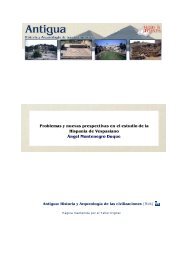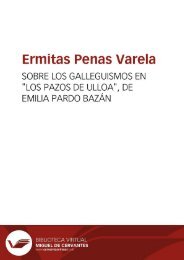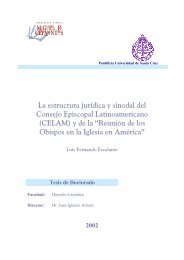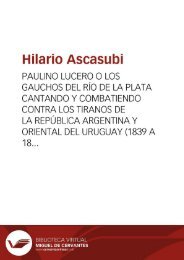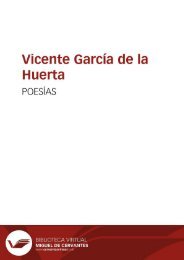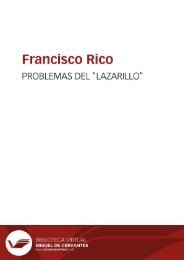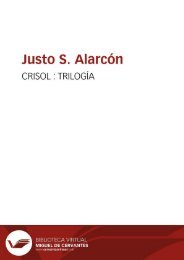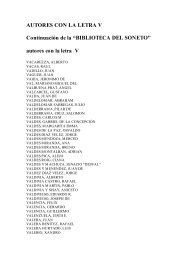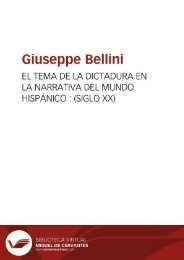You also want an ePaper? Increase the reach of your titles
YUMPU automatically turns print PDFs into web optimized ePapers that Google loves.
Anales galdosianos [Publicaciones periódicas]. Año XII, 1977<br />
Russell has so convincingly demonstrated 86 , in the character of Benina « la santidad » is not self-<br />
conscious or problematic, as it is in the characters of earlier novels such as Orozco, Viera, Nazarín<br />
and Halma. Benina has no concept of herself which she seeks the means to realize: she neither self-<br />
consciously separates herself physically from society, nor does she use others as the means for her<br />
own self-perfection. While the interplay between reality and illusion is employed in novels prior to<br />
Misericordia to expose the illusions of Orozco, Viera, Nazarín, Halma, etc., it is used in Misericordia<br />
to shed light upon, Benina's Christlikeness.<br />
Considered from the perspective of Misericordia , Orozco and Viera are far from the ideal which<br />
<strong>Galdós</strong> posits in the character of Benina. Both perform charitable works, yet they do so in the<br />
quixotic: pursuit of antiquated ideals: Orozco aspires to an ascetical, and subtly egoistical, ideal of<br />
self-perfection, and uses other people to attain it; Viera follows an outdated and unchristian ideal<br />
of honor. Continuing this line of reasoning, of the main characters of Realidad it is Augusta with<br />
whom <strong>Galdós</strong> sympathizes most, and who, by virtue of her intention to repent at the end of the novel,<br />
most approximates the « santidad » of the « figura evangélica » of Benina. (This view of<br />
Augusta is corroborated by the external evidence of her subsequent actualization of this intention<br />
in Torquemada y San Pedro.) Augusta alone traverses the Cervantine trajectory from engaño to<br />
desengaño by recognizing her own failings, and, having rejected the religious ideals of her husband,<br />
resolving to dedicate herself to the selfless and unconscious pursuit of charity. This is how <strong>Galdós</strong><br />
uses the interplay between reality and illusion to explore the inner reality of conscience and morality<br />
in Realidad and to begin the « proceso de espiritualización » which would continue to unfold in the<br />
novels that followed it. Finally, this interplay provided <strong>Galdós</strong> with the proper ironic framework to<br />
make in Realidad a serious commentary on social values, which would be repeated again and again<br />
in its successors: that all men, regardless of class cleavage, can attain « santidad », if they will only<br />
recognize their illusions and selflessly dedicate themselves to the total practice of charity. 87<br />
The Johns Hopkins University<br />
86 «The Christ Figure in Misericordia », AG , 2 (1967), 103-130. Also see J. E. Varey, «Charity in<br />
Misericordia », in <strong>Galdós</strong> Studies I , ed. J. E. Varey (London: Tamesis, 1970), pp. 164-194.<br />
87 I am grateful to Professors Rodolfo Cardona and Paul R. Olson for reading an earlier version of<br />
this paper and encouraging me to revise it for publication.<br />
58




